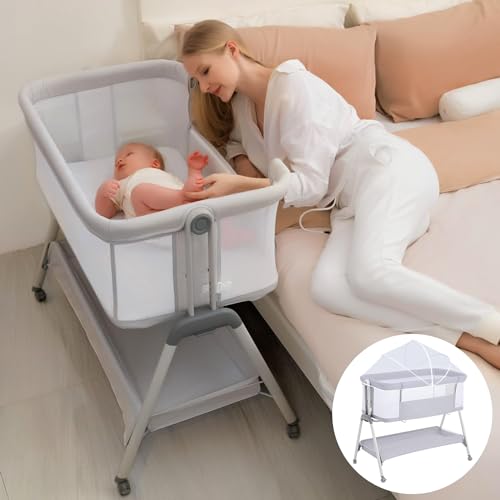How to Choose a Sale Cot
Mortuary Cots are an important element of funeral homes and hospitals. They allow staff to safely and respectfully transport bodies. They provide a dignified, comfortable resting place for the body.
COTS products play an important role in the federal marketplace, but they aren't easy to manage. This blog will explain how COTS products fit into GSA schedules, as well as other government procurement regulations.
Cost-effectiveness
The use of commercial-off-the-shelf (COTS) products allows procurement agencies to gain efficiencies by purchasing items that are readily available from the marketplace. This reduces the development time as well as the cost of life. It also enables procurement agencies to reap the benefits of technological advances and industry experience.
However it is important to note that COT designations are subjective and that different organizations may have a different perspective for interpreting what constitutes an actual COTS item. This could be a problem for a company that is relying on a consistent method to calculate accurate government prices. GPOs and wholesalers for instance, usually have a list that is not identical to the list used by manufacturers to determine government pricing. A well-documented SOP and a COTS reference library are crucial components in implementing an efficient and consistent methodology for assigning COTs.
Reliability
A sale cot is a vital purchase for mortuary services. It should be durable and durable enough to withstand the rigors of heavy use. It should be simple to transport and installed. The manufacturer should provide good customer support in case of any issues after sales. Also, get feedback from your staff before making the final decision. They will be the ones who will use the cots and can confirm if it's sturdy and reliable.
Wholesalers and GPOs assign COT designations which are not in line with the list of the manufacturer. This is due to a variety of factors, including changes in business models, mergers and acquisitions. This poses challenges to the application of a subjective lens to classify COTS.
Durability
Durability is key for sale cots because they must be able to endure the rigors of frequent use and transport. These cots are utilized by a variety of funeral homes to display the remains of deceased persons. They should be able to support the weight of caskets and other things. Cots must also be protected against corrosion and have an easy-to-assemble, sturdy structure. It is crucial to select a business that offers customer service and can assist with any issues that could occur after purchasing.

Solid wooden cots are the ideal option for furniture for babies since they're strong enough to last a long time, and less likely to be contaminated with harmful chemicals or toxic off-gassing unlike composite materials such as MDF or chipboard. cribs look more appealing than cheaper alternatives.
If you're looking for a cot that can also be used as a lounge chair then the Westport design from Silver Cross might be the ideal option for you. It's constructed from a durable material and comes with three different height levels for growing babies. The instructions are a bit confusing, but once you get it all figured out the cot will serve your family well.
The Helinox Cot One is the most lightweight cot on the market however it's not as durable as the other models we evaluated. similar web page 's also more difficult to assemble, as it's made up of many components. It's a comfortable cot and a good option for backpackers. It weighs 14 ounces less than the Thermarest Luxury Lite or Sleep Rite.
Safety
If you provide cots, you must ensure that they comply with the safety standards. This is an important step to prevent injuries to children and death. This can be done by asking your supplier if their products have been independently tested. Ask your supplier to send you a copy of their test results. You can also conduct your own testing.
It is crucial to check the safety of your cot before sleeping your child in it, no matter if it's brand new or used. It is also important to be looking for warnings and labels that give details, as well as an official certificate from the manufacturer. It should be free of sharp edges, protrusions or gaps that could trap a child’s finger or leg. There should be no footholds a child could use to climb out of the cot.
When choosing a cot, ensure that the mattress is flat and clean. It should be able to fit comfortably without any gaps. mini cotbed of the rail should not be more than 30 millimetres from the base of the mattress. If the cot has an adjustable base, make sure that it is in the lowest position.
Check that the slats and filler bars are securely fixed and aren't brimming with tiny holes that could trap clothing. Also, there shouldn't be any nuts, bolts or corner posts sticking out more than 5 mm that could grab a child's hands and cause strangulation. Also, ensure that the cot is away from loose blinds and curtains which could be pulled off by small hands.
Look for a label that states that the cot has passed mandatory tests and is compliant with Australian Standards AS/NZS2172:2003 Cots intended for household use Safety requirements. This is the only way to be sure that the cot you are buying is safe and suitable for sleep. It is illegal for second-hand stores and antique stores to sell antique cots that do not have certificates or labels.
While most designers and manufacturers work hard to ensure their products are safe, accidents may occur. Older cots used by other children might not be up to current safety standards, and they can pose risks of suffocation, strangulation, or ingestion of foreign bodies.
